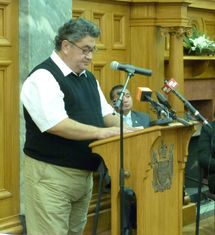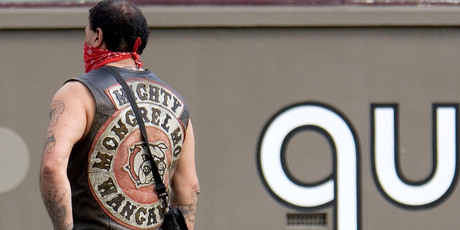http://www.melbournestorm.com.au/news-display/Thunderbolts-claim-impressive-away-win/71192
Wayne Smith sees himself among a group of 'concerned people who want to take action'. Photo / Getty Images
Wayne Smith says he is making a "moral stand" on climate change in joining 100 celebrated Kiwis in a major call to address New Zealand's most critical risks.
The former All Black coach is among a high-powered cross section of public figures and thinkers who have lent their names to an appeal demanding politicians face up to what the group sees as the five biggest issues facing the nation.
They span a range of areas, from risks to our economic and ecological security, to the genuine wellbeing of the people and country.
Wise Response was launched yesterday in Dunedin, where the campaign was borne from a public meeting at Otago University two years ago.
Key organiser and Otago Emeritus Professor Sir Alan Mark said Parliament would be asked to make a risk assessment of "the situation we now find ourselves in in New Zealand, which seems to be worsening on many fronts".
Sir Alan, a respected ecologist, singled out the degrading quality of our land, air and water.
'Climatologists have also predicted a sea level rise of up to 1m by the year 2100, which would have major consequences for many areas around New Zealand, not to mention the world generally.
"So we are asking the Government basically to address these issues and give us a response that would counter them, rather than just adapt to them."
The group was concerned the current generation was "acting as if there's no tomorrow".
Sir Alan acknowledged that the issues were broad, but they affected all Kiwis and were too serious to ignore.
Wayne Smith saw himself among a group of "concerned people who want to take action".
"This is about me adding my name to a list of New Zealanders who want our Government to have a well thought out contingency plan," he said.
Mr Smith felt the global environment problem was in the hands of the US, China and India, but New Zealand could commit to its own initiatives - namely lobbying the big players.
Te Radar said his fellow signatories on the list - among them writer and anthropologist Dame Anne Salmond, Wellington Mayor Celia Wade-Brown, writer Dame Fiona Kidman and broadcaster Chris Laidlaw - showed many Kiwis were paying attention to the risks raised.
"Hopefully it does something and makes more people heartened that there are people out there trying to get things done."
Mr Laidlaw said risks facing the country had built up "enormously" over recent years and many Kiwis were worried.
Artist Grahame Sydney felt political parties "in general" were not adequately addressing the concerns of Kiwis.
And Dunedin writer Dr Philip Temple took aim at the current Government for "operating on very short-term thinking".
"We should try to get out of the politics and get Parliament to start looking into the future to map out a course rather than - as we tend to just do - react."
Names on the list
• Dame Anne Salmond - writer, anthropologist and New Zealander of the Year
• Wayne Smith - former All Black first five-eighths and assistant World Cup coach
• Dame Fiona Kidman - poet and writer
• Fiona Farrell - writer
• Celia Wade-Brown - Mayor of Wellington
• Sir Alan Mark - Professor Emeritus
• Grahame Sydney - artist
• Glenn Turner - retired cricketer
• Dr Philip Temple - writer
• Anton Oliver - former All Black
• Te Radar - comedian, activist and TV personality
• Chris Laidlaw - former All Black, Rhodes Scholar, Wellington councillor and broadcaster
• Keri Hulme - writer
• Tamsin Cooper - fashion designer and TV personality
• Wayne Smith - former All Black first five-eighths and assistant World Cup coach
• Dame Fiona Kidman - poet and writer
• Fiona Farrell - writer
• Celia Wade-Brown - Mayor of Wellington
• Sir Alan Mark - Professor Emeritus
• Grahame Sydney - artist
• Glenn Turner - retired cricketer
• Dr Philip Temple - writer
• Anton Oliver - former All Black
• Te Radar - comedian, activist and TV personality
• Chris Laidlaw - former All Black, Rhodes Scholar, Wellington councillor and broadcaster
• Keri Hulme - writer
• Tamsin Cooper - fashion designer and TV personality
The listed are among 100 prominent New Zealanders endorsing the appeal.




.jpg)







 New Zealand's 19th-century wars...
New Zealand's 19th-century wars...






